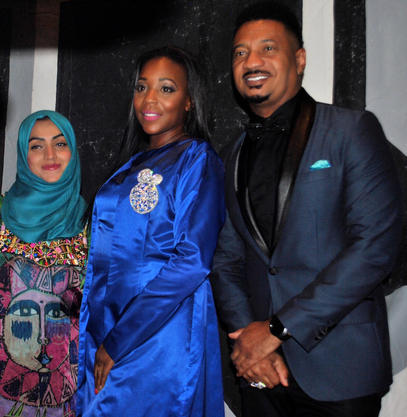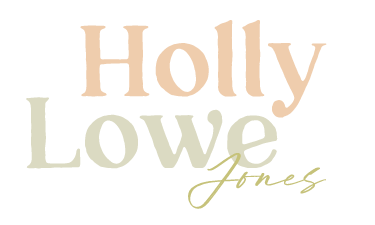Every six months, the highly-anticipated DC Fashion Week takes over The Capitol. Founder and Director Ean Williams–along with his team of talented artists and assistants–produce an incredibly unique Fashion Week in downtown Washington DC.
Williams is responsible for every aspect of the bi-annual show, from selecting the designers, casting models, choosing venues, and theme design. It is impressive indeed. In between fitting models and adding his finishing touch (literally) moments before the grand finale couture show, the very talented Mr. DC Fashion Week made time to answer some questions about the birth and legacy of DC Fashion Week.
ROSS LOWE MEDIA: Have you always wanted to be in fashion, or did it just happen organically?
EW: I started out as early as the 8th grade. My father re-married, and I had stepsisters. During high school, and junior high I shopped at regular stores like JC Penny. One day, my sisters took me to a strip mall, and picked me out something with a little more flair. When I went to school–I was already popular because I was smart, and people always thought I was funny–everyone just gave me this LOOK, like “omg, you look like you should be an actor or a model or something!” And I got so much attention on my appearance instead of my brain, or my wit; and it was different for me, and I liked it. To be honest, I liked it. So, then in high school, I won a modeling contest, and that’s what I really wanted to do. But, back then it was just so difficult, because there weren’t a lot of male models of color doing anything that I could identify with. And that’s particularly true in the South.
RLM: Is that where you’re from?
EW: I was born in St. Louis and I spent half of my childhood with my mother in Chicago, in Oak Park. When I turned 7, I moved to Memphis to live with my father, and I grew up there until I left and went to the military and traveled the world and all that good stuff. I’ve been here in DC since ’87.
RLM: Please share your professional background. Take us back to the beginning.
EW: So, after the modeling stint in high school, I couldn’t see it as anything that was going to pay for college, so I joined the military, and I started producing fashion shows there. I was stationed in Italy, and someone saw me in the street and wanted to shoot me and do photos, with real cameras and real film. They liked me because I was exotic. They were like, we see black people, but we only see Africans, and you look totally different. So I was like, “Wow! I’m modeling in Italy now.” After doing fashion shows there, once I got back to the States, I was like I’m a professional now, I’m ready to take the world by storm. So, I went to Central Casting and they told me “you don’t have professional pictures, you don’t have a look, maybe you should reconsider.” I felt very, very defeated you know. Never in my life did I feel violent, I felt violent. Like, I really wanted to blow up the building. That’s just how I felt. I was just so crushed. BUT, I took it to heart. So, I started studying and seeing what was really going on, and I understood. They rejected me three times before I got accepted. So, I did also get accepted to other agencies, I started acting, modeling.
I’ve always wanted to do this, but I was also always good in IT. When I left the AirForce, I joined NASA. I was a NASA Engineer, worked on the Hubble Telescope, the Servicing Mission, and the Launch Mission. My background is IT. The great thing about that is, the IT technical world, is very business-oriented and procedural. It taught me how to operate within a process. And using those best practices, it allowed me to do my own website design, playing with graphics. I was using email for model casting calls before it was standard agency practice. So because of my use of technology, there were a lot of things I didn’t have to pay for. I knew how to work with Desktop Publishing, and design my own graphics. All of those things have helped keep us as organized as we are today, because I didn’t study fashion.
RLM: What kept you going, despite the adversity?
EW: So, every time I ran into a problem, it presented another opportunity for me. So, when I wanted to get into MTM (an even bigger agency), I got a job teaching at John Casablanca so I would know when the model calls were. When I started having issues with some of the designers I wanted to work with, I designed my own line. When I couldn’t afford to do NYFW, I established my own. So, I’m glad I decided to follow that vision. I’m glad everyone is still supporting it.
RLM: What distinguishes DC Fashion Week from other Fashion Weeks?
EW: We are in our 25th season now, and it’s just amazing we have so many designers. Our special guest is a designer from Estonia. Nine of the leading fashion houses from Estonia are here. We have designers from Paris, Nigeria, Lithuania, Camaroon. It’s really exciting. And what’s really rewarding, is that many of the designers, for example that come from Eastern Europe and different places, they don’t have models with representation from the United States. So, they snatch our models up. That’s the reverse of what happens here in the States. In the States, the look is universal. Everyone looks alike, and minorities are truly under-represented . So, for DC Fashion Week we have models of all different ethnicities and different religions. We’re the first major fashion week to present an entire modesty fashion show during fashion week. So, that’s where we vary. We’ve had some great model talent come out of DC, including the last two winters, showcased on our platform, and went on to win America’s Next Top Model. Keith Carlos and Nyle Dimarco, who just won dancing with the stars. We have a model who was signed in New York and has now modeled the last two seasons for Kanye West. We discovered another model in the mall, invited him to do Fashion Week, he went to NYC, got signed, and ended up in Beyonce’s Irreplaceable video. He’s been modeling ever since and now has his own line. So, we are really proud of the models that start here, and go on to do big, big things.
RLM: What designers are you excited about showing this week?
EW: It’s hard for me to pick . . . but I really love what Ellen London does, from Thailand. It’s different from what we see day-to-day. I love Heydari, she’s been in the business for a long time, about 30 years. She’s been in different stores throughout the area, she’s from Persia. She really knows how to dress women of a particular age. I mean it’s good for women of all ages, but really fitting for women who are 30+, she gives it a very. . . without being to skimpy, or being too revealing, she just really knows how to dress women. And I applaud her. She has very geometric silhouettes and they’re extremely flattering.
RLM: Why should designers, models and patrons come to DC Fashion Week vs the other Fashion Weeks?
EW: Anyone can come to Fashion Week. Because, of course, the largest fashion industry is not based in DC. It’s based in NYC. But, as an alternative, of course, we’re the best priced fashion week in the world. We can stand by that. Designers are really attracted to the nation’s Capitol. We are the most powerful city, it makes sense. We are home to many of the different embassies, so the embassies give a lot of support. They help the designers, help them with business practices, obtaining their visas here, and introducing their products in the States. And we’re very grateful that this is where they choose to do it.
RLM: Where can we find you on social media? What are this season’s hashtags?
EW:
#DCFashionWeek #DCFW25
Facebook: https://www.facebook.com/dcfashionweek/
Twitter: https://twitter.com/dcfashionweek
Website: http://www.dcfashionweek.org/home/
I do many other things besides fashion week, so for anyone that wants to see what my life is like, follow me on Instagram: @mr_dcfashionweek
All images belong to Ross Lowe Media.












